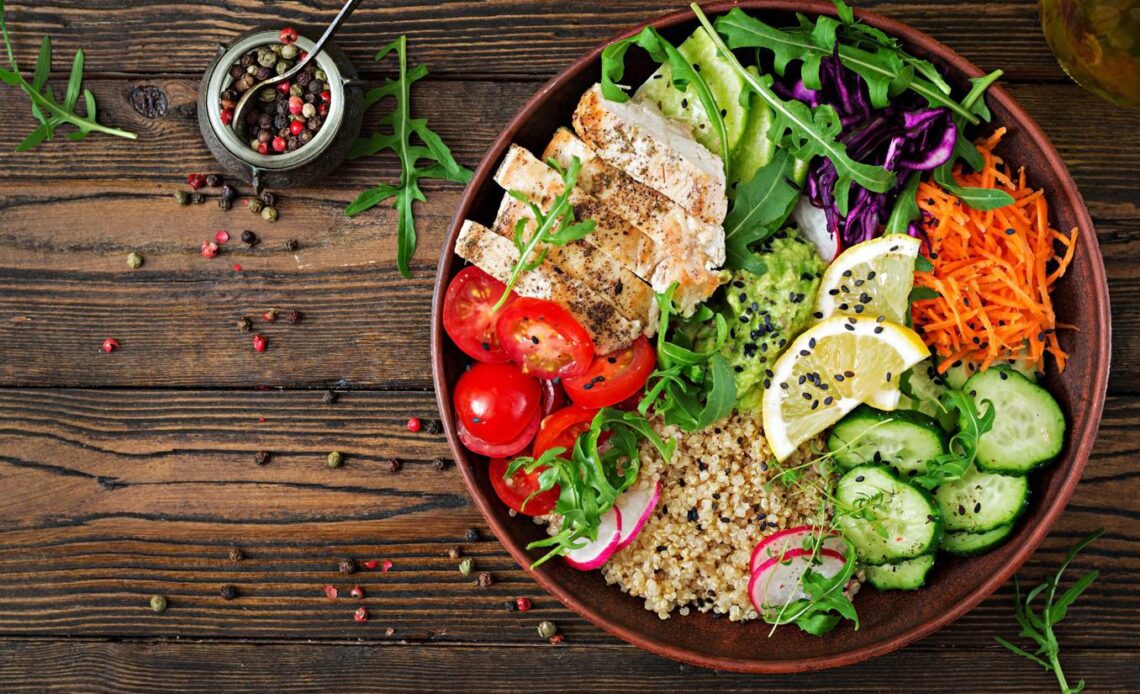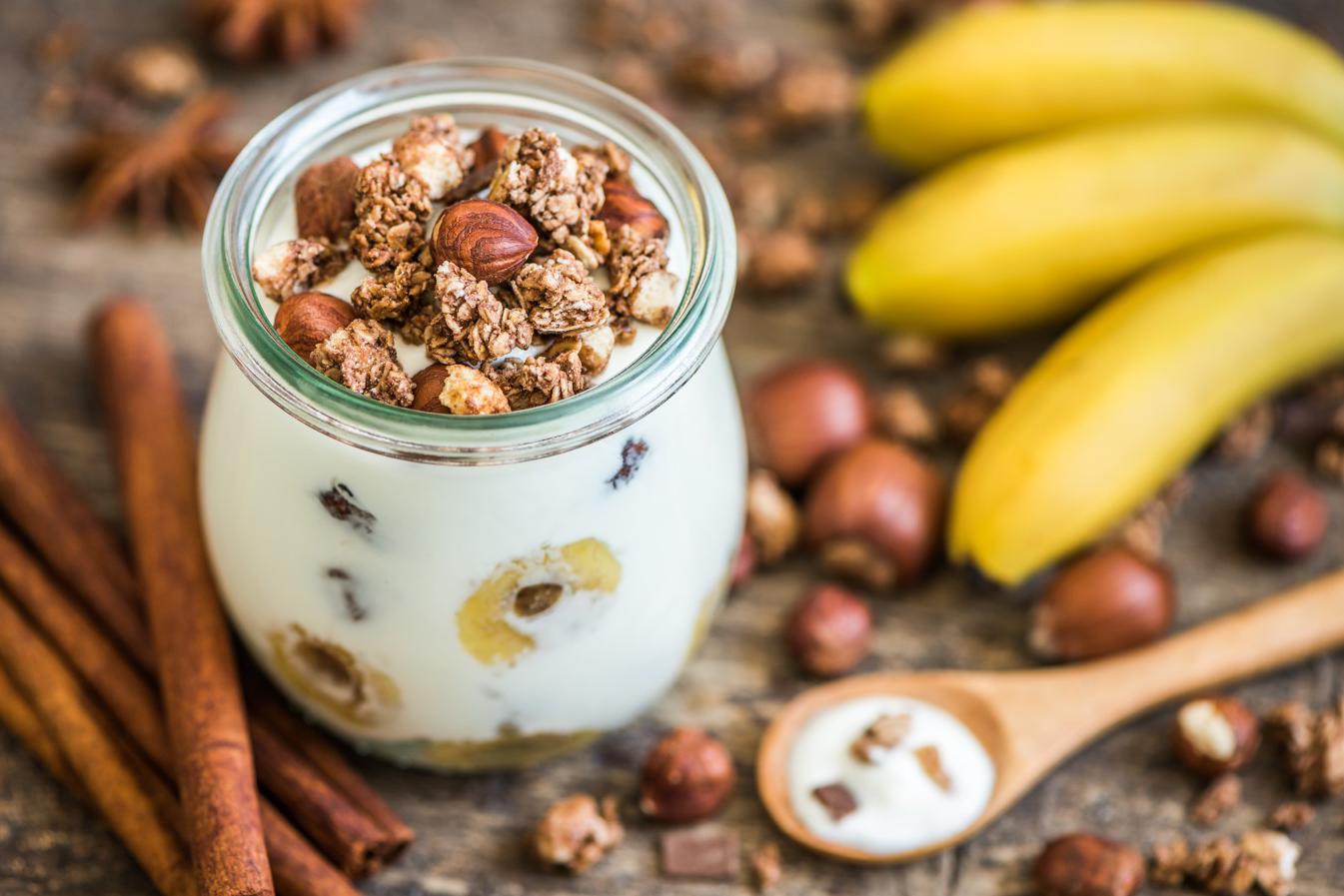
This approach to nutrition was developed in the 2010s, and its basic principles are relevant today. Together with experts, we figure out what the Harvard plate is, what its main principles are, and provide an example menu.
- What is this
- Principles
- Menu
- Limits
Alexandra Razarenova, dietitian, nutritionist, therapist, member of the European Union of Nutritionists, Dietitians and Food Industry Specialists;
Yana Kartaeva, gastroenterologist, nutritionist of the BestDoctor group of companies.
What is a Harvard Plate
The Harvard Plate is a model of healthy and proper nutrition with the division of different food groups into parts at each meal. To do this, the plate is divided into three basic sectors: proteins (plant and animal), vegetables with fruits and whole grains, complex carbohydrates. The volume of each part is its own and constant. For example, most of the space is given to vegetables (1).
The concept of a “healthy plate” was developed by scientists at the Harvard School of Nutrition (USA). It was first presented in 2011 as an alternative to the then existing “food pyramid.” The latter looked more confusing, and it also lacked some important recommendations, such as physical activity.
The benefits and harms of the Harvard plate
The Harvard Plate concept is considered useful. According to the authors of the method, such recommendations reduce the risk of heart disease and the factor of premature death (1).
What else is the Harvard plate good for?
- Balanced diet. The principles of the Harvard plate remain relevant and useful today, says dietitian and nutritionist Alexandra Razarenova. According to her, it is a system that provides the body with nutrients and helps maintain health.
- Flexible approach. Within the framework of such a diet, it is possible to replace products in accordance with personal preferences. “But it is best to choose healthy and natural alternatives. For example, replace pork with chicken or turkey, and canned vegetables with fresh or frozen ones,” says Alexandra Razarenova.
- Clarity. Visualizations like the Harvard Plate are useful for those who strive for balance in their diet. According to the expert, dividing the plate into sections helps to better control the proportions of different food groups and avoid overeating certain categories.

At the same time, this concept has its own disadvantages and inconveniences.
- Self-discipline. Following a clear division of food into proportions is serious work. Even if a person buys a special plate, he can still make a mistake with the portion sizes and the quality of this or that sector.
- Lack of a clear set of products. The Harvard Plate only provides general guidelines for nutrition. There is no detailed list of products, as well as recommendations on how to prepare them or in what form it is best to eat them. This may be inconvenient for people who are just delving into the topic of healthy eating.
- Limitations of the method. The Harvard Plate has never been positioned as a weight loss method, says gastroenterologist and nutritionist Yana Kartaeva. It is a dietary tool that allows you to design a meal so that it includes all the main food groups, the doctor explains. Therefore, you should not expect a miraculous effect from it.
The Harvard Plate Principle

The Harvard plate consists of three main sections. Their proportions look like this: 50% – fruits and vegetables, 25% each for healthy protein and whole grains. How to do it: take a plate and mentally divide it into two equal parts. One half is a place for vegetables. Divide the second part in half again to get two equal parts – for proteins and carbohydrates.
The size of the plate in the Harvard concept is not regulated. But, according to Alexandra Razarenova, the gold standard for men and women will be the following:
- 20 cm for women;
- 24 cm for men.
Vegetables and fruits
Vegetables and fruits are the basis of the Harvard Plate diet. According to the authors of the concept, it is best to aim for color diversity and get at least one serving from each category. (2):
- Dark green vegetables are mostly leafy greens;
- yellow or orange foods – fruits and vegetables;
- red foods are usually legumes, such as beans;
- citrus.
But there is an exception: potatoes are practically banned from the Harvard plate because they affect blood sugar levels. (1) These sudden changes can trigger feelings of hunger.
Examples of recommended fruits and vegetables on the Harvard Plate:
- tomatoes;
- cucumbers;
- carrot;
- radish;
- zucchini;
- zucchini;
- Bell pepper;
- leafy greens;
- eggplant;
- cabbage, cauliflower and brussels sprouts.
Squirrels
The Harvard Plate prioritizes healthy proteins from both animal and plant foods. At the same time, the authors of the method recommend limiting red meat and various sausages, hot dogs, and smoked meats. (3).
Po According to Alexandra Razarenova, when filling your plate with proteins, it is important to consider your physical activity and other special conditions. For example, with regular training or pregnancy, the need for protein is higher. The ratio between animal and vegetable proteins, according to the expert, should be 50:50.
Examples of recommended proteins in a Harvard plate:
- fish (salmon, pollock, hake);
- poultry, including turkey;
- rabbit;
- red meat (no more than twice a month);
- seafood;
- cottage cheese, eggs.
Carbohydrates
The Harvard plate focuses on the type of carbohydrates, not the amount. They should be complex, which the body digests slowly. The emphasis is on whole grains and foods prepared with them. Bran and fiber slow the breakdown of starch into glucose, maintaining stable blood sugar levels. In addition, fiber helps lower cholesterol. (4).
Examples of recommended carbohydrates in the Harvard plate:
- whole wheat;
- barley;
- quinoa;
- buckwheat;
- oats;
- bulgur;
- brown rice;
- whole wheat pasta;
- whole wheat bread.
An example of the correct filling of a plate according to the principles of the Harvard plate, according to Alexandra Razarenova, may look like this.
- Half a plate: a variety of fresh fruits and vegetables (eg lettuce, broccoli, carrots, apples).
- Quarter of a plate: high quality proteins (fish, chicken, tofu).
- Quarter of a plate: grain products or starchy foods (brown rice, buckwheat).
- Let's not forget to add vegetable oil.
Harvard Healthy Eating Plate Menu

The Harvard plate does not offer ready-made solutions for what a daily diet might look like. This means that you will have to select the products yourself, keeping in mind the general recommendations. Special dishes with marked sectors will simplify the task. Such plates are sold on all marketplaces. Often, they already have images of permitted products on them – this will be a hint on what to cook.
An example of a daily diet based on the Harvard Plate principle
- WITHbreakfast: plain yogurt, fruit (such as banana) and nuts.
- ABOUTtroubles: a serving of turkey, durum wheat pasta, vegetables stewed or fried in a small amount of olive oil – carrots, cauliflower or zucchini.
- Dinner: baked fish, bulgur, fresh vegetable salad, one egg (soft-boiled is possible), a slice of whole grain bread.
The difficulty is presented by dishes that are eaten from deep plates or liquid. For example, soups. The authors of the Harvard plate have their own recommendations on this matter. When preparing soup, consider all the same proportions of the main ingredients that are marked on a regular plate. Make sure that about half of the products that go into the pot are…
